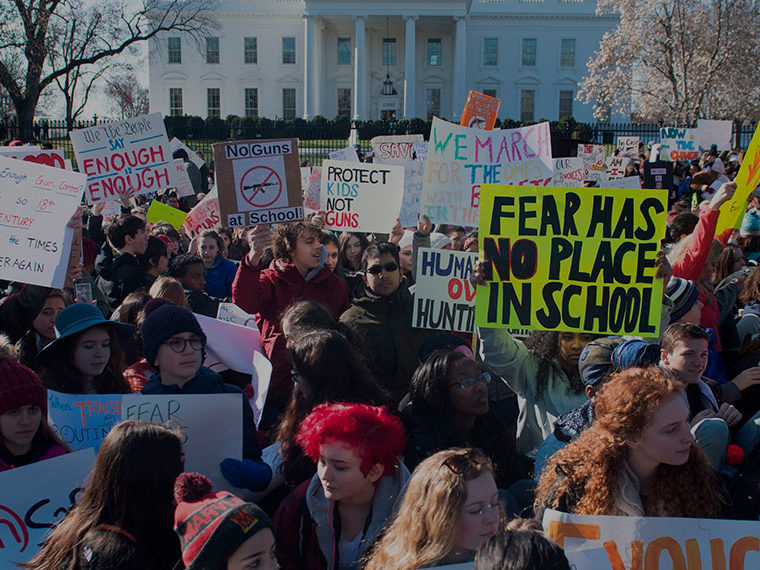Access to birth control among lower-income women was curtailed by pandemic’s lockdown
Recessions are typically a buzzkill for birthrates. In econo-speak, demand for children tends to fall, as unemployment and economic stress rise.
Analyzing unemployment and birthrate data from pre-COVID-19 recessions, economists Melissa Kearney and Phillip Levine, nonresident fellows at Brookings, estimate that every 1 percentage point increase in unemployment during a recession results in a 1 percentage point decrease in birth rates nine months later.
Opt In to the Review Monthly Email Update.
We’re still awaiting final birthrate statistics through 2021, but given the 5.5 percentage point increase in unemployment between April 2020 and March 2021, Kearney and Levine projected a commensurate decline of 300,000 to 500,000 births. That’s based on their analysis of birth rates in the nine months following outbreak spikes during the 1918 Spanish flu, which did not occur during a recession.
Another COVID-19 Supply Side Problem: Contraception Access
A paper published in Population Research and Policy Review inserts a big mitigating asterisk into the baby bust narrative.
Drawing on real-world data, researchers estimate that the loss of access to contraception and reproductive health care during the lockdown among lower-income women suggests birth rates will be higher than they would normally be during a recession.
“At the same time changes in the economy reduced the demand for children, the supply of contraceptives and access to abortion fell and likely moderated the baby bust,” write UCLA’s Martha J. Bailey and the University of Michigan’s Lea J. Bart and Vanessa Wanner Lang.
The researchers were able to tap into a Michigan study begun in 2018 that was following the contraceptive choices for low-income women who received reproductive health care at Planned Parenthood health centers. They had more than 1,400 records of low-income women between August 2018 and March 2020.
The researchers estimated expected birth rates based on the contraception used and overlaid that with data on how the lockdown reduced Planned Parenthood operations during COVID-19, and thus access to contraception.
The authors note that the characteristics of their single-state universe is in line with national trends, suggesting their findings can be broadly interpreted.
Lost Access to Care
Bailey, Bart and Lang first estimated changes in contraception choices made by Planned Parenthood patients from before to after they had a reproductive health visit. On average, they estimate that among women who were seen at a Planned Parenthood facility, the subsequent use of more effective birth control resulted in an 8% decline in expected birth rates.
The researchers then turned to estimating the impact of patients not being able to schedule appointments during the lockdown. In April 2020 Planned Parenthood in Michigan reported a 60% drop in patient visits. Applying that finding to the national universe of similar patients, the researchers projected that in 2021 the birthrate among this cohort would be 8% higher than it would have been if Planned Parenthood had been able to maintain its patient caseload.
Finally, Bailey, Bart and Lang use the Kearney/Levine model, combined with the unemployment rate among lower-income households, to predict a reduction in the birthrate of more than 9% due to the economic downturn and uncertainty related to the pandemic.
Combining this 9% decline in births due to employment and economic anxiety with the 7.9% increase in births due to reductions in access to birth control significantly changes the projection for 2021. Bailey, Bart and Lang expect that the total impact of the pandemic may be only a net 1.1% decrease in the birth rate among low-income women, and that it could even be an increase, given restrictions in many states to abortion access and clinic closures amid the pandemic.
And they note that recent provisional government data on birthrates suggests the contraception-access factor may be at play in the broader population as well. Data from the National Vital Statistics System show that the national birth rate declined 1.9% in the first half of 2021, which is about one-third the rate initially suggested by the Kearney/Levine model. Provisional data for the entire year show that birth rates may have even increased, further calling into question that the pandemic led to a baby bust.
Featured Faculty
-
Martha J. Bailey
Professor of Economics
About the Research
Bailey, M.J., Bart, L.J., Lang, V.W. (2022). The Missing Baby Bust: The Consequences of the Covid-19 Pandemic for Contraceptive Use, Pregnancy and Childbirth Among Low-Income Women. Population Research and Policy Review.






